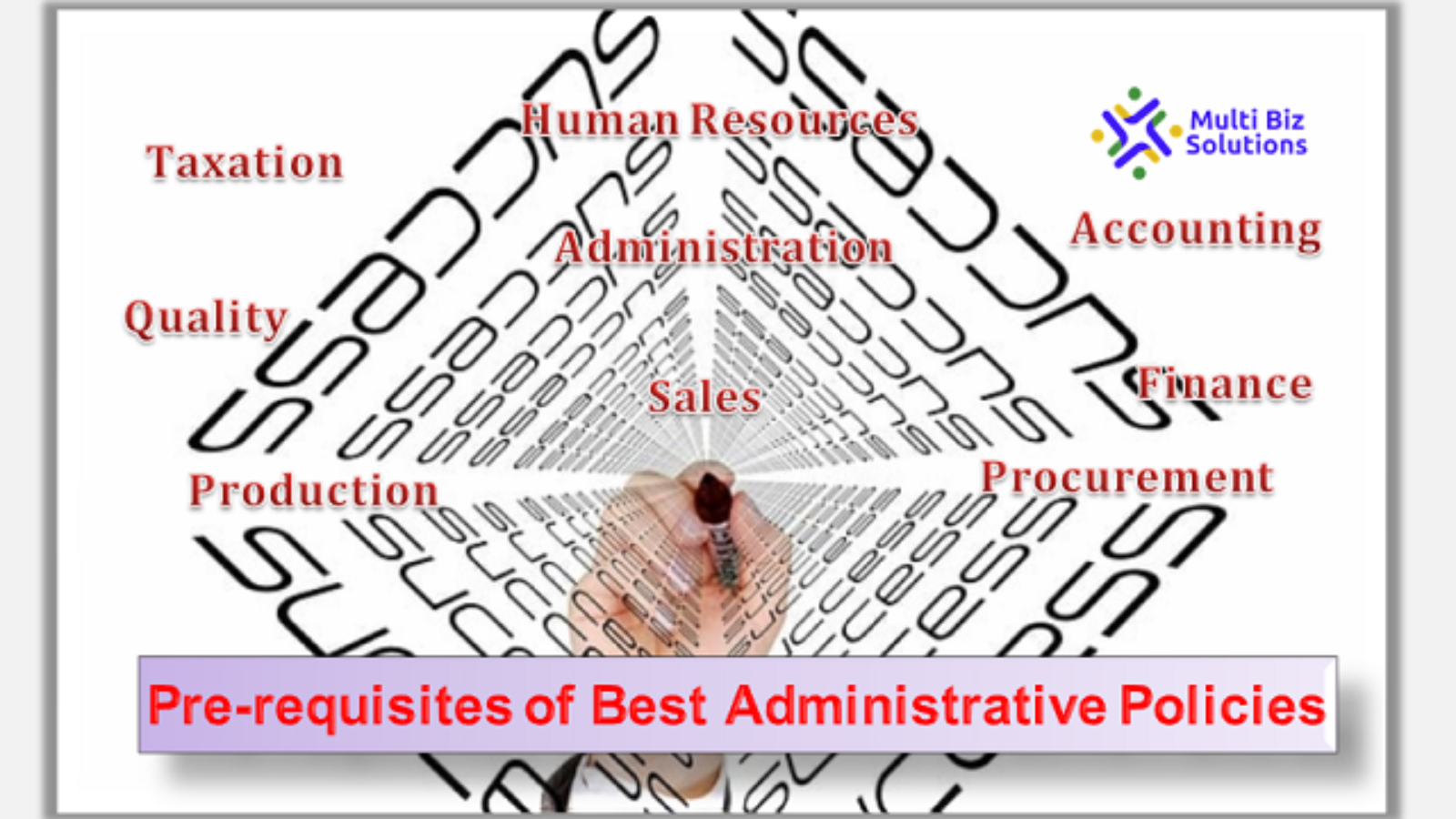Pre-requisites of best administrative policies ensure organizations operate smoothly and efficiently by providing clear guidelines and procedures. Leaders must define policies that align with organizational goals and industry standards. Decision-making frameworks should support consistency and fairness across all departments. Resource allocation strategies must optimize efficiency and minimize waste. Effective policies require input from key stakeholders to address diverse operational needs. Regular policy evaluations help identify areas for improvement and adaptation. Compliance with legal regulations strengthens policy effectiveness and credibility. Organizations should provide training to ensure employees understand and follow policies. Strong administrative policies enhance productivity, accountability, and overall organizational success.
Clear Organizational Objectives:
Administrative policies should align with the organization’s mission, vision, and strategic goals. Having a clear understanding of what the organization aims to achieve is crucial for policy development.
Legal and Regulatory Compliance:
Ensure that policies comply with all applicable laws, regulations, and industry standards. Legal counsel may be needed to review policies to ensure compliance.
Stakeholder Involvement:
Involve relevant stakeholders, including employees, managers, and subject matter experts, in the policy development process. Their input can help identify practical and effective solutions.
Comprehensive Needs Assessment:
Conduct a thorough needs assessment to identify areas where administrative policies are necessary. Assess risks, vulnerabilities, and areas of potential improvement within the organization.
Clear Policy Objectives:
Define the specific objectives of each policy. What problem or issue is the policy addressing, and what outcomes are expected?
Policy Scope:
Clearly define the scope of each policy. What departments, functions, or processes does it cover? What are its limitations?
Policy Ownership:
Assign responsibility for policy development, implementation, and enforcement to designated individuals or departments. Define roles and responsibilities clearly.
Cross-Functional Collaboration:
Administrative policies often affect multiple departments or functions. Encourage collaboration and coordination among departments to ensure policies are effective and well-implemented.
Policy Review Process:
Establish a regular review and revision process for policies. Policies should be dynamic and adaptable to changing circumstances. Specify how often policies will be reviewed and updated.
Effective Communication:
Policies should be communicated clearly and effectively to all relevant stakeholders. Ensure that employees are aware of, understand, and have access to the policies that pertain to their roles.
Training and Education:
Provide training and educational resources to help employees understand and comply with policies. This is particularly important for policies related to compliance, safety, and security.
Consistency:
Strive for consistency in policy language, format, and terminology. Consistency makes policies easier to understand and follow.
Transparency:
Promote transparency in policy development and decision-making processes. Employees should have confidence that policies are developed fairly and in their best interest.
Flexibility:
While policies provide guidelines, they should also allow for flexibility in implementation when necessary. Recognize that there may be exceptions or unique situations that require special consideration.
Feedback Mechanisms:
Establish mechanisms for employees to provide feedback, report policy violations, and suggest improvements. Encourage open and constructive communication.
Enforcement and Consequences:
Clearly define the consequences of policy violations and the enforcement mechanisms. Ensure that violations are addressed consistently and fairly.
Measurable Metrics:
Identify key performance indicators (KPIs) or metrics to assess the effectiveness and impact of policies. Regularly monitor and evaluate policy outcomes.
Documentation:
Maintain thorough documentation of policy development, revisions, and compliance efforts. Documentation helps in auditing, reporting, and accountability.
Crisis and Contingency Planning:
Consider policies related to crisis management, contingency planning, and business continuity to ensure the organization’s resilience in challenging situations.
Ethical Considerations:
Ensure that policies reflect the organization’s ethical values and principles. Ethical behavior and decision-making should be promoted and reinforced.
Summary
Creating the best administrative policies requires a thoughtful approach that aligns with the organization’s unique needs, goals, and culture. Leaders must assess current policies and identify areas for improvement to ensure efficiency. Clear communication of policies helps employees understand expectations and responsibilities. Organizations should involve key stakeholders in the policy-making process for better implementation. Well-structured policies streamline operations and promote a positive work environment. Training programs reinforce policy compliance and ensure consistency across departments. Regular feedback collection helps identify gaps and refine policies effectively. Strong administrative policies support decision-making and create a structured framework for smooth organizational functioning.
Regularly reviewing policies ensures they remain relevant and effective in a dynamic business environment. Organizations must adapt policies to changing circumstances and emerging challenges. Evaluating industry trends helps businesses stay compliant with new regulations. Policy updates should reflect technological advancements and evolving workplace dynamics. Timely modifications prevent inefficiencies and improve operational success. Management should communicate updates clearly to avoid confusion among employees. Regular audits help identify outdated policies requiring revisions. Establishing a review schedule keeps administrative policies aligned with organizational objectives. A proactive approach to policy updates ensures businesses maintain efficiency, compliance, and long-term success.


Add a Comment